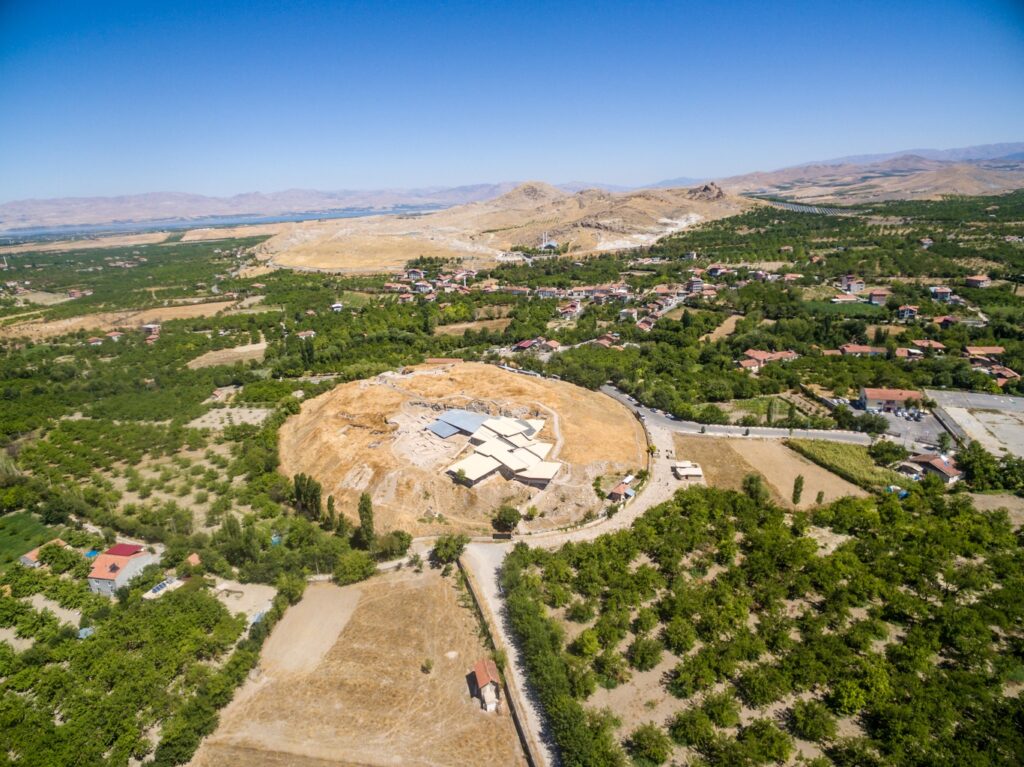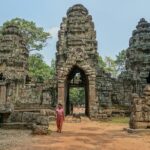Arslantepe Mound
On July 26, 2021, The World Heritage Committee added seven sites to the famous UNESCO World Heritage List. One of the newly inscribed places is an archaeological site from Turkey: Arslantepe Mound.

Arslantepe Mound is a 30-meter-tall archaeological tell located in the Malatya plain, 12 km southwest of the Euphrates River. Archaeological evidence from the site testifies to its occupation from at least the 6th millennium BCE until the late Roman period. The earliest layers of the Early Uruk period are characterized by adobe houses from the first half of the 4th millennium BCE. The site’s most prominent and flourishing period was in the Late Chalcolithic period, during which the so-called palace complex was constructed. Considerable evidence also testifies to the Early Bronze Age period, most prominently identified by the Royal Tomb complex. The archaeological stratigraphy extends to the Paleo-Assyrian and Hittite periods, including Neo-Hittite levels. The site illustrates the processes that led to the emergence of a State society in the Near East and a sophisticated bureaucratic system that predates writing. Exceptional metal objects and weapons have been excavated at the site, among them the earliest swords known worldwide. This suggests the beginning of forms of organized combat as the prerogative of an elite, who exhibited them as instruments of their new political power.

Arslantepe Mound has been on UNESCO’s World Heritage Tentative List since 2014. It is one of Turkey’s “earliest religious and civil sites.” The mound is thought to date back 8,000 years. UNESCO notes, “Archaeological evidence from the site testifies to its occupation from at least the 6th millennium BCE until the late Roman period.”
With the addition of Arslantepe Mound (meaning “Lion Hill” in Turkish), there are now 19 Turkish sites on the UNESCO World Heritage List.
The mound has been home to many civilizations over centuries. UNESCO details them: “The earliest layers of the Early Uruk period are characterized by adobe houses from the first half of the 4th millennium BCE. The site’s most prominent and flourishing period was in the Late Chalcolithic period, during which the so-called palace complex was constructed.
Considerable evidence also testifies to the Early Bronze Age period, most prominently identified by the Royal Tomb complex. The archaeological stratigraphy extends to the Paleo-Assyrian and Hittite periods, including Neo-Hittite levels.”
The first archaeological digs at the site were carried out by a French team led by Louis Delaporte in 1931. Since 1961, excavations have been carried out by a team from Roma La Sapienza University. The excavations revealed a palace made of adobe bricks and fitted with rain drainage infrastructure, as well as more than 2,000 seals and pottery similar to those found in Mesopotamia.

According to UNESCO, “the site illustrates the processes which led to the emergence of a State society in the Near East and a sophisticated bureaucratic system that predates writing.”
UNESCO also points out that “exceptional metal objects and weapons have been excavated at the site, among them the earliest swords so far known in the world, which suggests the beginning of forms of organized combat as the prerogative of an elite, who exhibited them as instruments of their new political power.”
Related readings :
Unesco Sites in Turkey with Video










